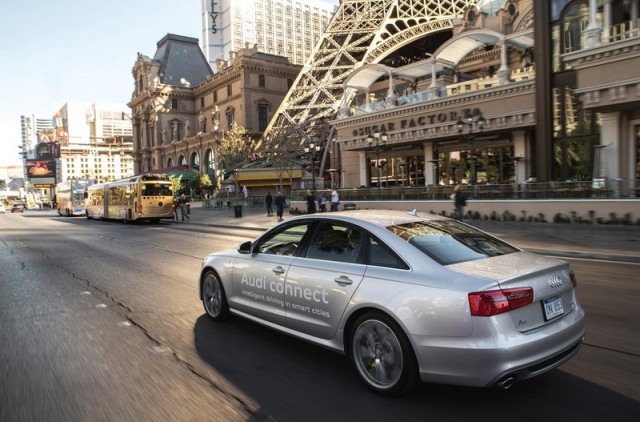According to Audi, the frustration of continual red lights may soon be a thing of the past. This week the German manufacturer revealed the production readiness of its 'Online' traffic light information system. Its aim? To connect drivers with local traffic light systems to offer alerts on the optimum, timed approach to a traffic light. Thereby, a green light is available when reached. Its potential? To reduce the wasted time spent at red lights, while saving a claimed 15 per cent in CO2 emissions and fuel.
Here's how it works. By pairing an Audi vehicle's Connect or MMI system to a local traffic unit, the technology can accurately calculate the optimum approach speed of the vehicle to ensure the driver reaches a green light at a junction. It's so smart in fact, that even if the driver does hit a red light due to congestion, the system will ensure the vehicle's start-stop function has the engine already started and running before the light turns green.
Plus, Audi revealed another smart feature - the count-down function. Just like some pedestrian lights in major cities, the system will automatically calculate the seconds remaining of a red light before the driver can proceed via an in-built timer. It's suggested that, if fully adopted, this technology could save 900 million litres of fuel a year, in Germany alone.
The technology was shown at the Las Vegas Consumer Electronics Show (CES) and testing is currently underway at Verona in Italy, a town where almost 60 traffic lights populate the city centre. Other testing is taking place in Berlin, only this time over 1,000 traffic lights are involved in the experiment.
Anything else?
As hinted at the CES, Audi has other smart tech waiting in the wings. These include improved automated parking and autonomous driving in traffic. And not forgetting Audi's Smart Display using an android operating system to power a tablet that manages the car's auxiliary controls at home, or while on the move.

